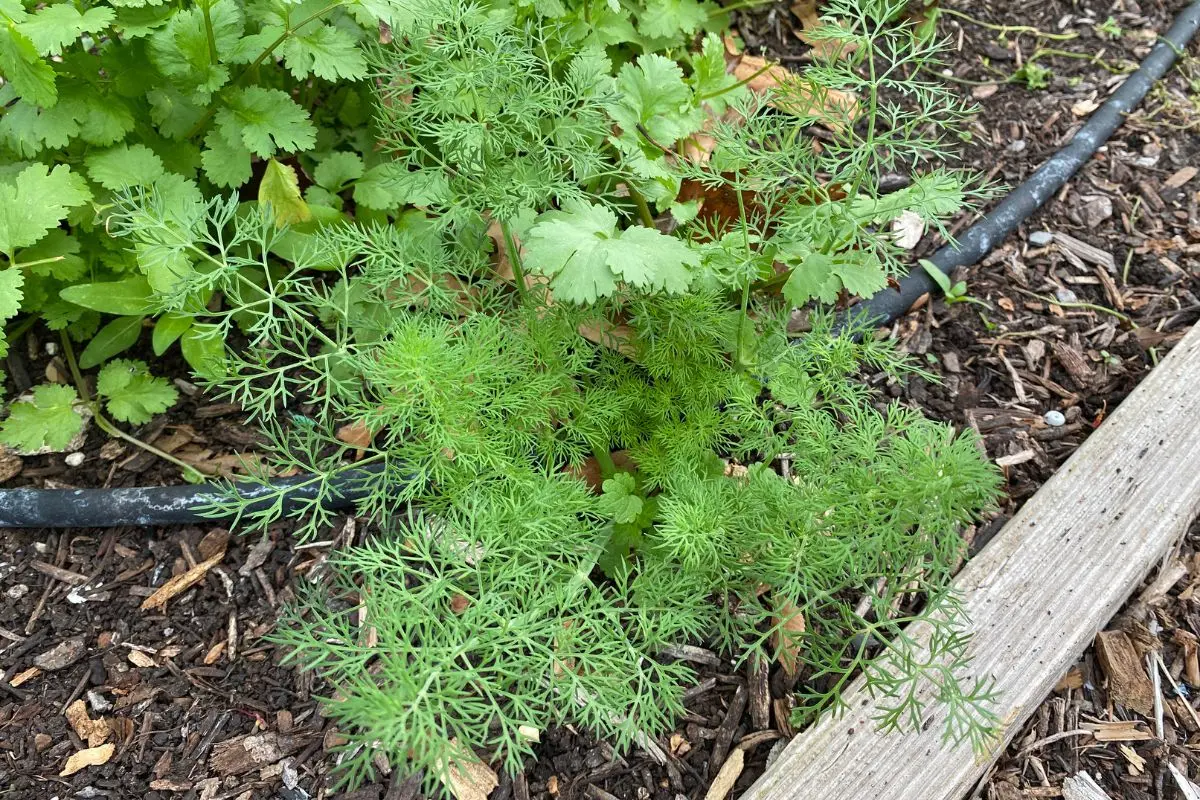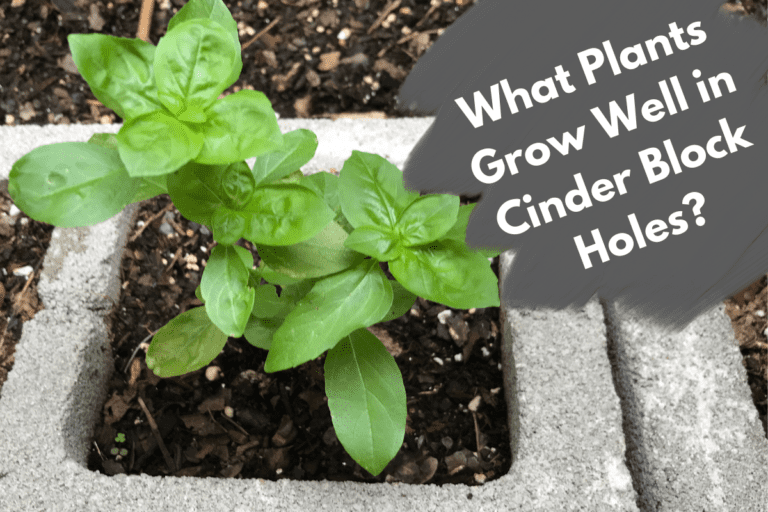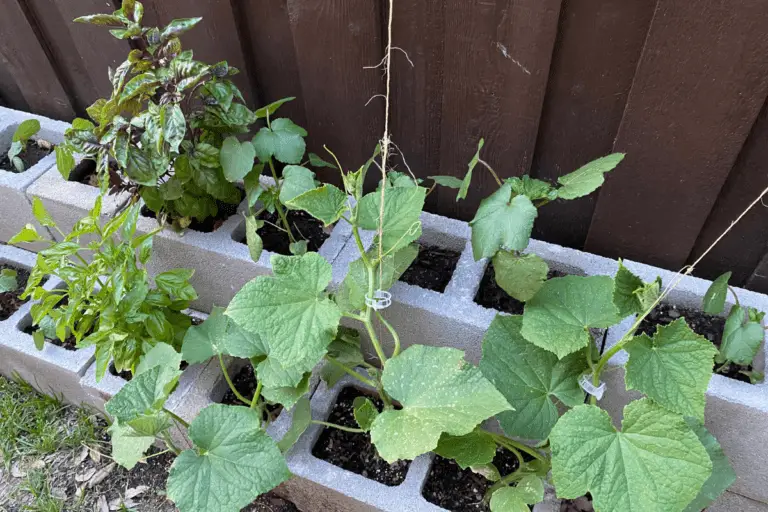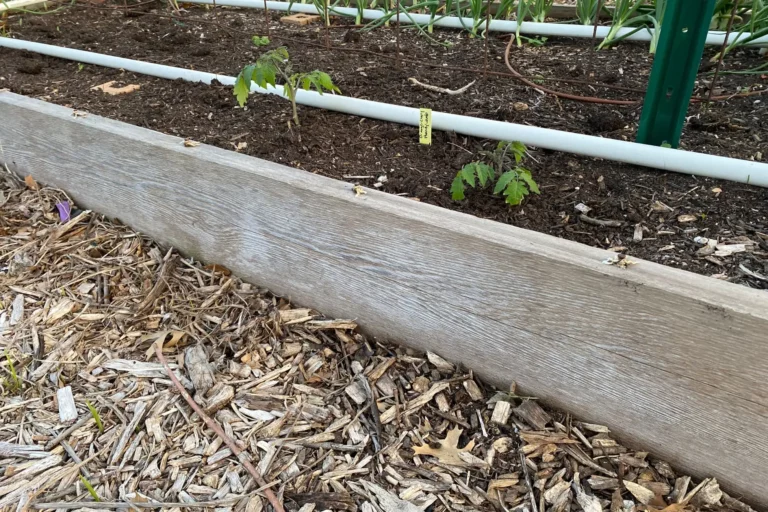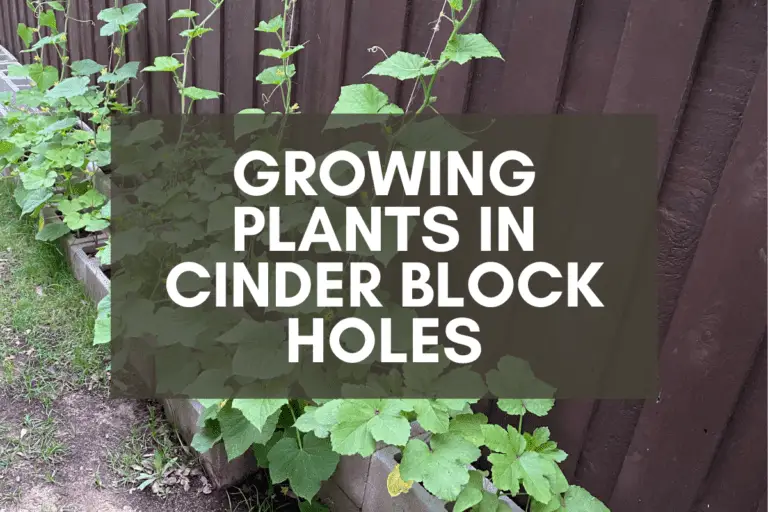13 Must-Grow Herbs for Your Raised Garden Bed
Herbs are a wonderful addition to any raised garden bed. Not only do they add flavor and fragrance to your meals, but they also offer a variety of health benefits.
I’ve written about plants you shouldn’t grow in your raised garden beds, but in this article, I want to explore the herbs that do grow wonderfully in raised beds and share some of my experiences growing herbs in my backyard.
Basil, chives, cilantro, dill, fennel, lavender, marjoram, oregano, parsley, rosemary, sage, thyme, and tarragon are excellent herbs to grow in raised garden beds. These herbs are relatively low maintenance, offer a wide range of flavors for cooking, and are easy to grow in well-drained soil.
Growing herbs in raised garden beds is relatively easy as long as you choose the right plants for your climate and garden bed.
And guess what: You don’t even have to choose herbs that you personally cook with. I grow several herbs in my garden that I don’t use for cooking at all but that smell wonderful, look beautiful, and attract lovely pollinators to my garden.
In this article, I’ll share a list of my favorite 13 herbs to grow in raised garden beds, as well as tips for planting and caring for your herbs.
If you plan things correctly, you can grow a beautiful herb garden no matter how much space you’ve got, so let’s take a look at what you’ll need to do to grow amazing herbs this year!
Do Herbs Do Well in Raised Garden Beds?
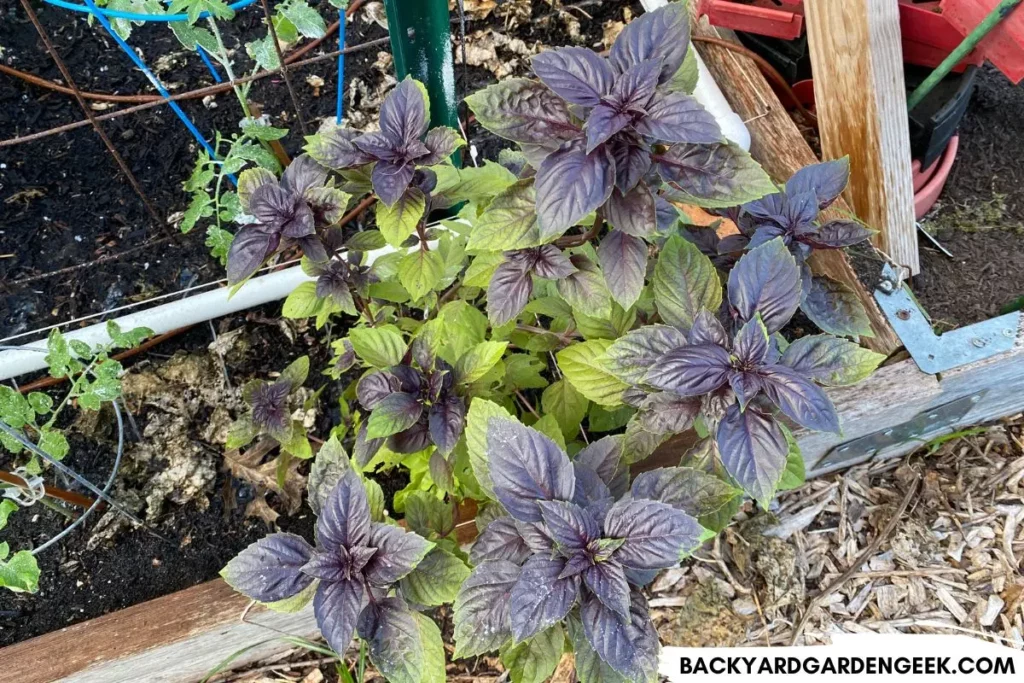
Herbs can do exceptionally well in raised garden beds because raised beds provide good drainage, improved soil quality, and better control over the growing environment, which can be ideal for growing herbs.
When doing so, it’s important to make sure your raised beds get at least 4-5 hours of sun throughout the day and to avoid certain herbs (like mint or lemon balm) that can take over if you’re not careful.
Below you’ll find a table that provides a quick overview of my favorite herbs to grow in raised garden beds.
Beneath the table, I’ve included short descriptions of why these herbs are great for raised beds plus things you’ll want to consider when growing these plants. I’ve also created a list of herbs that you should never grow in raised beds.
Here’s the list of my favorite herbs to grow in raised garden beds:
| Basil | Basil is an easy-to-grow herb that requires warm temperatures and does best in well-drained soil. It adds a unique aroma and flavor to dishes, making it a popular choice for raised garden beds. |
| Chives | Chives are a hardy herb that thrive in raised beds. They are a flavorful addition to many dishes and are known for their delicate onion flavor. |
| Cilantro | Cilantro grows well in raised garden beds because it’s a quick-growing herb that does well with ample sunlight. If grown properly, it’ll reseed itself and come back year after year. |
| Dill | Dill is a hardy herb that’s perfect for raised garden beds. I love growing my own dill for pickling since it’s much cheaper than buying it at the store. |
| Fennel | Fennel is an aromatic herb that grows well in raised garden beds. It prefers well-drained soil and full sunlight. Although my wife could care less for it, I think its licorice-like flavor adds a unique taste to certain dishes. |
| Lavender | Lavender’s fragrant blooms and relaxing scent make it a popular choice for raised beds. It’s great for attracting pollinators as well. |
| Marjoram | Marjoram is relatively low maintenance and a nice addition to your recipes. Its sweet, delicate flavor is used in a variety of dishes, including soups, sauces, and meat dishes. |
| Oregano | Oregano is a hardy plant. Its strong, earthy flavor adds depth to many dishes, but you’ll need to keep it under control since it’ll spread across your raised beds if you aren’t careful. |
| Parsley | Parsley is a hardy herb that’s easy to grow in raised garden beds. It adds fresh flavor and color to a variety of dishes, making it a staple in many herb gardens. |
| Rosemary | Rosemary is a fragrant herb that grows well in raised garden beds, as long as you’re willing to give it a permanent space. I love adding it to crock pot chicken since its woody, aromatic flavor livens things up a bit. |
| Sage | Sage is a hardy herb that prefers full sunlight. Its earthy flavor is great for use in a variety of dishes, making it a popular choice for raised garden beds. |
| Tarragon | Tarragon is a great herb to grow in a raised garden bed because it’s relatively easy to grow. Its leaves have a mild anise taste and are commonly used to flavor fish, chicken, and egg dishes. |
| Thyme | Thyme is a versatile herb that grows well in raised garden beds since it loves well-draining soil. Its delicate, minty flavor adds a fresh taste to your recipes. |
Growing these herbs in raised garden beds gives gardeners the ability to have fresh herbs at their fingertips for use in a variety of dishes.
With that in mind, let’s take a closer look at each of these herbs so you can understand why exactly I enjoy growing them in my backyard.
Herbs That Wow: 13 Amazing Plants for Your Raised Garden Beds
I’ve given you a quick overview above of the herbs that I like to grow in my raised garden beds, but I thought it’d be helpful to provide additional information about why I like these plants plus the best ways to grow them in your garden.
Basil
Basil is a warm-season herb that’s well-suited for raised garden beds. It grows best when temperatures are between 70-80°F (21.1-26.7°C) and can be easily added to salads, sauces, and pestos.
To grow basil in a raised garden bed, start your seeds inside 4-5 weeks before your last spring frost or sow seeds directly and water regularly. To ensure a continued harvest, pick leaves as needed–and be sure to pinch any seed heads that start to form–but avoid removing more than a third of the plant at any given time.
Unlike rosemary plants, basil is an annual, so you’ll need to replant it each year.
Chives
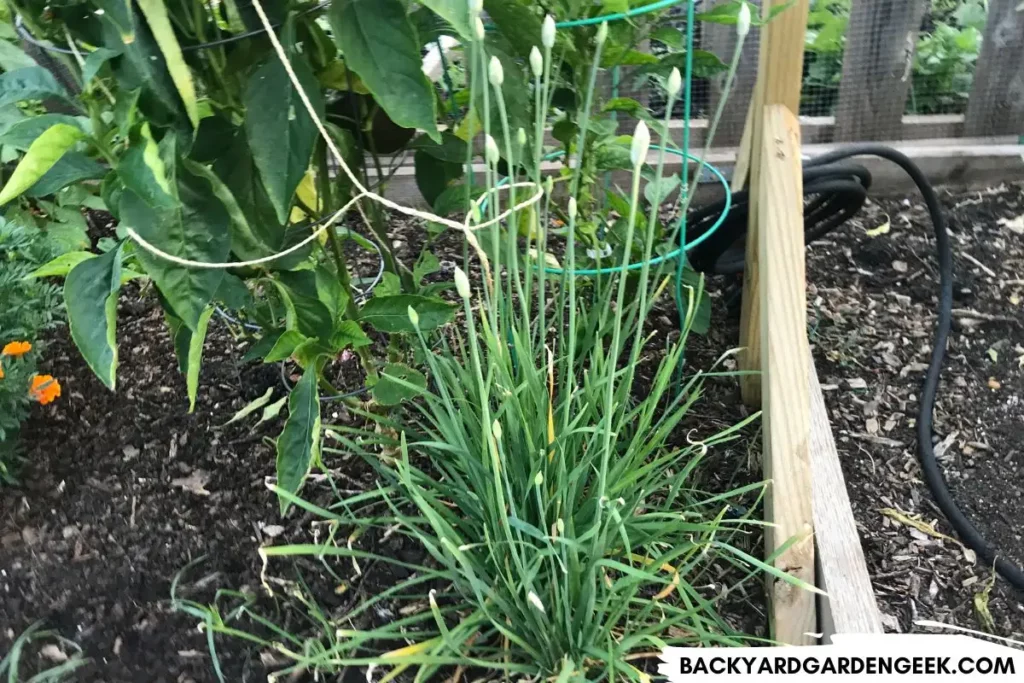
Chives are a cool-season herb that grow easily in raised garden beds. They thrive in temperatures between 60-65°F (15.6-18.3°C), but they’ll do just fine in colder or warmer temperatures once they’re established because they’re such a hardy plant.
Chives are flavorful and nutritious and can be added to salads, dips, and sauces. They’re also relatively pest resistant, so you don’t have to worry about aphids, armyworms, snails and slugs, spider mites, or other destructive bugs attacking them.
Chives grow best in full sun or light shade, and they do well in raised garden beds. To get started, start chives indoors in late winter or plant seeds directly in your raised beds come spring. Just be sure to water regularly, especially when the plants are young.
They’ll grow back year after year, and you can snip off the shoots as needed for cooking or garnishing.
Cilantro
Cilantro is a cool-season herb that’s well-suited for raised garden beds.
It grows best during more temperate times of the year, and it’s a flavorful and fragrant herb that can be used in salsas, curries, and guacamoles.
Cilantro is a fast-growing herb that loves the sun. To grow cilantro in a raised garden bed, sow seeds directly in the spring or summer, and be sure to keep the soil moist to encourage germination.
Because it’s a cool-season herb, it’s best to plant it in the early spring or late fall. You can harvest the leaves as needed, but be careful not to take too much at once or you may slow down the plant’s growth.
Its seeds are known as coriander, and if you can get cilantro established in a good raised bed, the plant will reseed itself years after year.
I’ve heard that aphids like cilantro, but I’ve never personally had problems with aphids on my cilantro plants. Spider mites dislike cilantro, so be sure to plant some near your tomato plants. They’ll help you to keep spider mites away from your plants.
Dill
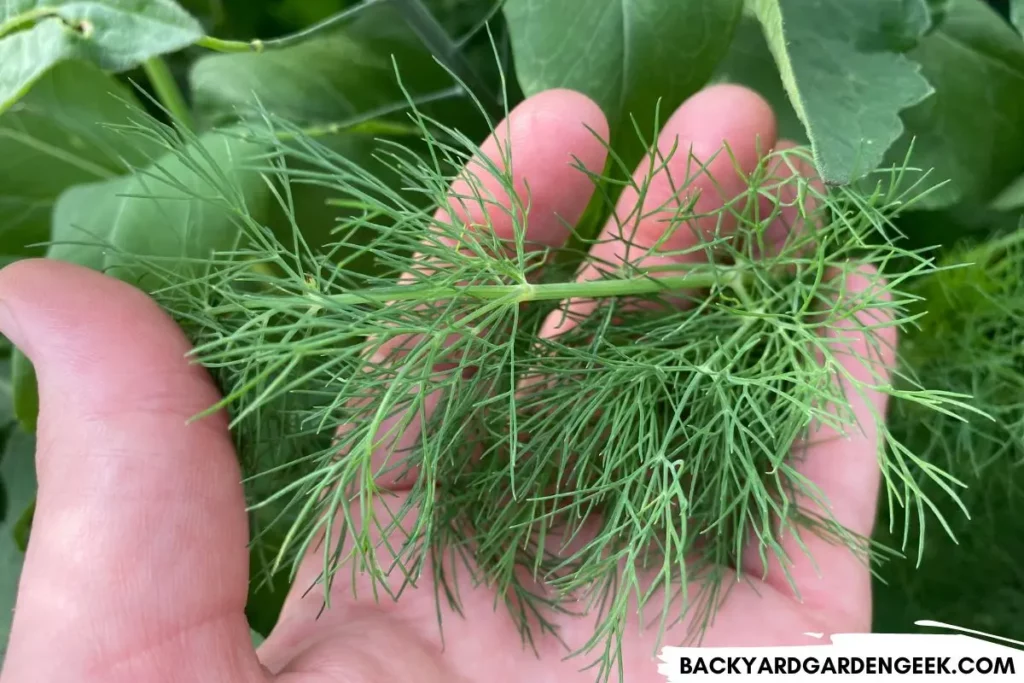
Dill is a cool-season herb that grows easily in raised garden beds. It requires well-drained soil and full sun, and it thrives in temperatures between 60-70°F (15.6-21°C).
Dill is a flavorful and fragrant herb that can be added to pickles, sauces, and dips.
Dill is a popular herb that grows best in full sun. To grow dill in a raised garden bed, sow seeds indoors in later winter or plant seeds directly in early spring and make sure the soil doesn’t dry out.
Dill grows quickly, but it can be a bit finicky. Keep in mind that dill is a short-lived annual, so you’ll need to replant each year.
Fennel
Fennel is a cool-season herb that’s well-suited for raised garden beds. It’s flavorful and fragrant and can be added to salads, stews, and soups.
Fennel is an aromatic herb that prefers full sun. To grow fennel in a raised garden bed, plant seeds directly after the last freeze and keep the soil evenly moist until the seed has germinated and the plant has established itself. Fennel grows well in well-drained soil and can be harvested entirely or as needed.
Lavender
Lavender is a warm-season plant that grows easily in raised garden beds. It’s a fragrant and aromatic herb that can be added to recipes or grown to attract pollinators.
Lavender loves sunny conditions. To grow lavender in a raised garden bed, plant in the early or late spring and be sure to provide well-draining soil. Lavender needs well-draining soil to prevent root rot, so be sure to plant it in a raised bed or raised area in your garden. Lavender can be harvested for its flowers, leaves, and oil.
Marjoram
Marjoram is a wonderful herb that’s well-suited for raised garden beds. It’s flavorful and fragrant and can be added to soups, stews, and sauces.
To grow marjoram in a raised garden bed, start your seeds indoors 5-6 weeks before the last spring frost. Once you no longer have to worry about frost or freezing temperatures, transplant your plants into the raised beds and water it enough to keep the soil properly moist. Marjoram is a perennial herb that can be harvested for its leaves and flavor.
Oregano

Oregano thrives in temperatures between 70-80°F (21.1-26.7°C), but I’ve seen it survive temperatures as low as 25°F (when covered properly, of course!). Oregano is flavorful and can be added to pizza, sauces, and marinades.
Oregano is a popular herb that grows best in full sun. To grow oregano in a raised garden bed, plant seeds indoors during late winter, then introduce the seedlings to the garden sometimes in spring.
Oregano is a hardy herb overall. Just keep your eyes on it because it can grow pretty large if you ignore it for a few months.
Parsley
Parsley is relatively easy to grow in raised garden beds once it gets established. It likes lots of sun, and it’ll keep growing and growing as long as you never cut off too much at once.
I start my seeds indoors in late winter, but you can sow seeds directly in your raised beds once there’s no longer any threat of freezing temperatures. Parsley is a biennial herb, but I have no interest in letting it take up space in my raised beds for 2 years.
Instead, I harvest whatever I want that first year, then simply grow new plants the following year.
Rosemary
Rosemary is a woody perennial herb that’s easy to grow in raised garden beds, but it’ll occupy that area of your garden for quite some time so plan carefully before planting.
In other words, don’t plant rosemary in your raised beds unless you want that rosemary bush to take up space there for years and years.
Rosemary is a fragrant herb that’s commonly used in Mediterranean cuisine. It’s also a great herb for adding to soups, stews, and roasts. I love putting sprigs of rosemary in whenever I cook chicken in my crock pot. They add some wonderful flavors to the dish.
I don’t advise growing rosemary from seed unless you’re very patient. I find it’s much easier to spend $10-15 to buy a small rosemary bush.
Don’t harvest much that first year since the bush needs to grow, but once your rosemary has reached a sizable height, you can harvest sprigs whenever you want to.
Sage
Sage is a woody perennial herb that’s commonly used in Mediterranean and Middle Eastern cuisine. With its earthy flavor, it’s a popular herb for use in dishes like stuffing, soups, and sauces.
Sage is a flavorful herb that grows best in full sun and well-draining soil. Start your seeds indoors 6-8 weeks before the last frost of the season, then transplant the young plants into the raised bed once all fear of frost is gone.
Sage is a slow-growing herb, so be patient as it establishes itself in your raised garden bed. You’ll want to mulch around it and water regularly so that the soil doesn’t dry out.
Tarragon
Tarragon is a flavorful herb that loves full sun. You can attempt to grow from a cutting, but it’s far better to just buy a plant that you can transplant into your raised garden beds.
You’ll need to give the plant plenty of space (preferably 2-3 square feet) so that it has room to develop as time goes on. You’ll either need to give it some support or keep it pruned so that it doesn’t grow too top heavy over time.
Thyme
Thyme is a versatile herb that has a delicate, minty flavor. It’s easy to grow in raised garden beds and is a popular choice for gardeners looking to add some flavor to their meals without overpowering the dishes.
You can grow thyme from seed, but it’ll take time and patience on your part, and overall, I think it’s just better to purchase a plant or get a cutting so that you don’t have to worry about the challenges when it comes to starting plants from seed.
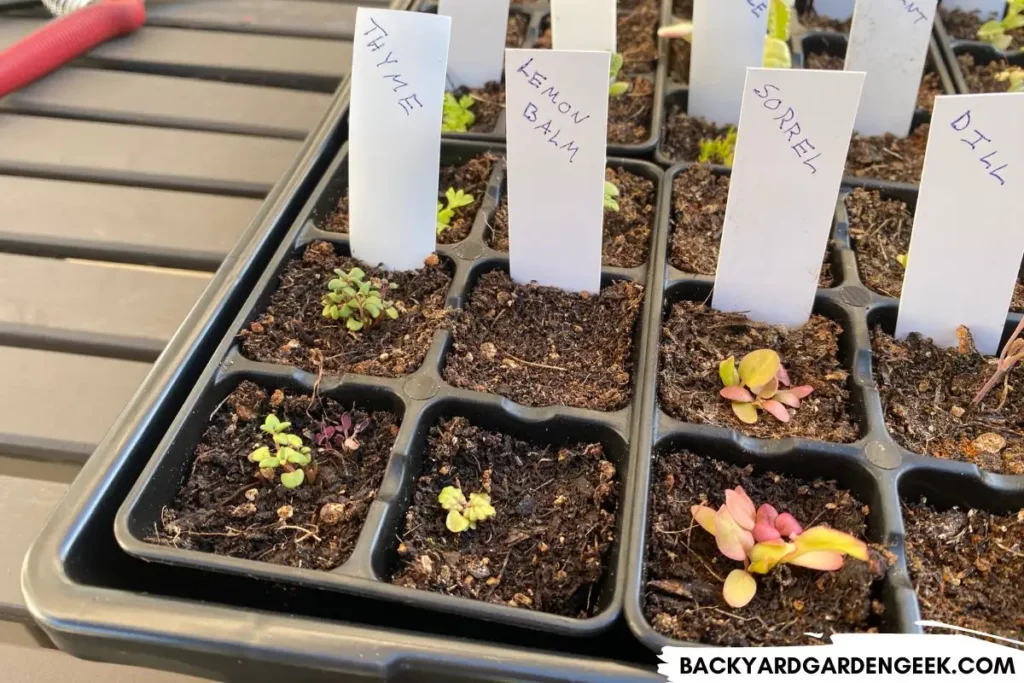
If you’re starting from seed or a cutting, get a head start by planting the seed or cutting at least 9-10 weeks before the final spring frost. That way, you’ll have a well-developed little seedling that can then be transplanted into the garden once there’s no longer any chance of frost.
Growing herbs can be a great way to make the most of your raised garden beds. Not only do they make your meals more flavorful, but they also help to add fragrance and beauty to your outdoor space.
With a wide variety of herbs to choose from, I encourage you to try out quite a few of them to see which ones you like growing and eating most.
Whether you’re a seasoned gardener or just starting out, growing herbs in raised garden beds is a great way to enjoy the benefits of gardening and improve your cooking at the same time.
More Information
If you’ve enjoyed reading about raised garden beds and want to learn more, check out these articles:
